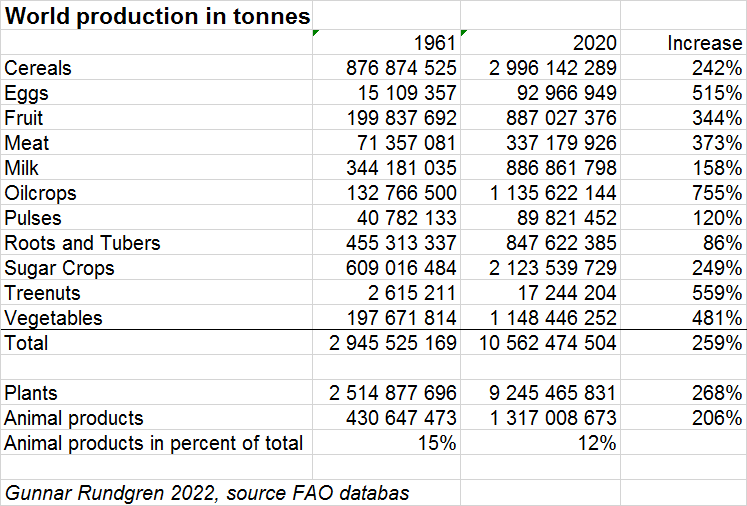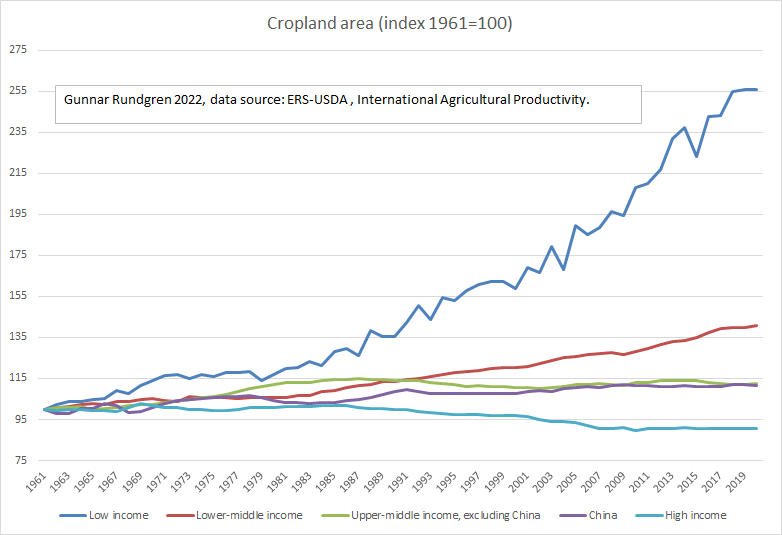Without doubt, global agriculture output has increased tremendously over the last sixty years.* How much, which crops or commodities, how and why are things I will address in a series of articles.
Output in volume increased with 268 % since 1961
Measured in tons world agriculture output of crops has increased with 268% since 1961. The population increased with 151%, i.e. the production per person increased with 43%. Not all of this is eaten by people. Some of these crops are fed to livestock (see more in the following post) and livestock production has increased with 206% in the same period.

Milk production is the only of the main food groups that has followed population closely. Pulses, roots and tubers has not kept pace with population. Oil crops has increased tremendously and nuts, vegetables and eggs have all increased more than 450%.

Vegetable oil and chicken are the real rockets
Going into more detail we see that oil crops dominate the list of the 10 food commodities that has increased most. Fish and other aquatic species, wild or cultivated, have also increased a lot (they are not part of my analysis, but it would certainly be worthwhile to look more into them in the future, perhaps my readers have some good sources, please feel free to insert that info in the comments).

Among meats, the rocket is chicken. Pork consumption has also doubled, almost totally attributable to China, where consumption went from to 2 kg per person in 1961 to 39 kg per person year 2019. The consumption of beef, mutton and goat has been very stable. It is quite surprising that in the heated “meat” debate articles are always illustrated with cows or a steak when the share of consumption is around 20%.

Of vegetables and fruits, citrus, onion, tomatoes and bananas have increased much. Of the cereals the biggest increase has been in maize (corn) with a 398% increase, rice with 245% and wheat with 220%.
Cropland increase has played a minor role in increased output
Cropland area increased from 1.313 billion hectares to 1.580 billion hectares, approximately 20%. As can be seen from the first table the increase of plant product from those field was 268%, i.e. only ten percent of the total yield increase can be attributed to increased cropland area. How that has been possible will be discussed in a later article. The development of cropland area varies a lot between the countries, with acreage going down in the high-income countries and increasing rapidly in low-income countries.

It should be noted, however that the total area of crop land in low income countries still is very small (9%).

To be continued…..
*There was, of course, no spectacular change in 1962, the Great Acceleration had started earlier, the reason the article discuss the development from 1961 onwards is simply that the FAO database starts that year!
Teaser photo credit: © Michael Gäbler / Wikimedia Commons / CC BY-SA 3.0






